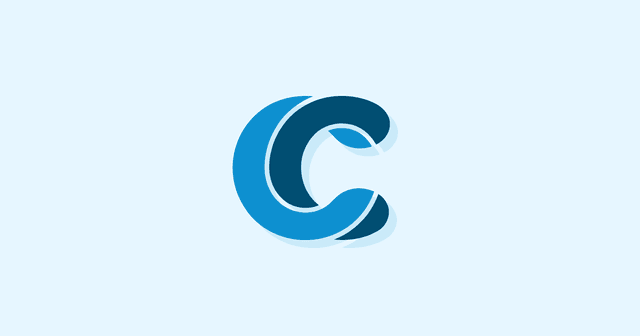Overview
ECommerce is changing, and it can be difficult to stay on top of what works and what matters. One of the crucial new metrics that has emerged is CAC, so today we’re talking about modern SEO and how it applies to keeping your CAC low.

It has been a turbulent few years for SEO, and some skeptics are starting to doubt whether the industry has any legs left. I don’t think things are that grim, but I understand where they’re coming from—SEO cannot stay the same if it wants to survive. Today we’re talking about modern SEO, why CAC is the metric that matters, and what you can do to keep it down.
The New Metrics
What happened to CTR?
I don’t rate CTR as a particularly useful metric and I haven’t for a while, because it’s very easy to get users to click but it’s much harder to get them to convert, and boosting CTR at the expense of everything else (as SEO marketers were doing in the mid-2010s) leads to “pogo sticking”, where users open a page, immediately close it, then open another page and immediately close it, and so on—Google is aware of this trend, and if your site has a low bounce time then you’re going to take an SEO hit. If your focus is still on clicks in 2020, you need to reframe your SEO efforts around more useful metrics like Customer Acquisition Cost.
What is CAC?
It’s a pretty simple equation:
Total Cost of Sales and Marketing
Number of New Customers
We tend to calculate CAC within a specific timeframe: annual reports, quarterly or monthly reports can give us different pictures of what’s working and what isn’t, and putting them together helps us to create a more complete picture. It’s also good to break them up by marketing channel so you can assess which channels are effective and which aren’t.
CAC on its own isn’t sufficient: you also need to consider the costs of your goods relative to it. A $5 CAC is incredible for a real estate company but terrible if you’re selling 10c lemonade on the sidewalk. There are still some things we can say across the board: a lower CAC is better than a higher one, and that reducing CAC should be a primary concern for digital marketers in 2020.
How SEO can reduce CAC
SEO has changed a lot in the last 10 years. If you want to read more on that, please see our Honest Guide to Modern SEO. The short version is this: the primary component of modern SEO is helpful content. There are no tricks left, there’s no wiggle room: Google’s algorithms have reached a point where you make the thing users want, or you fail. Thankfully, this all ties together: the changes in SEO and the move towards CAC are both about forging deeper connections with users, rather than simply getting them to click.
Good SEO in 2020 is about producing good content and having clear messaging, so let’s break down what that looks like:
Finding a USP
There are a lot of businesses out there. What makes you different? Well, your USP does. It’s your Unique Selling Point, and it’s the reason consumers should go to you rather than the next shop down. You need to have a meeting with your team and figure out what your USP is and you need to do it yesterday. Start with the question “Why should I come to you?” and keep narrowing your answer down until you’ve got a single snappy sentence.
User Personas and Better Targeting
If your goal is to get people to stick around, it’s going to be significantly easier to achieve if you understand those people. One of the best ways to do this is by generating user personas. A user persona is a fake person you’ve created to market to. It’s a target demographic of 1, but highly detailed. A good persona has the following sorts of information:
- Name
- Age
- Occupation
- Goals
- Values
- Education
- Salary
- Family/Lifestyle
Working with demographics can often isolate you from the fact that you’re talking about people, and user personas help you better-identify your ideal target demographics while also creating content for them that’s actually enriching.
The Pareto Principle
AKA the 80/20 rule, which states that 80% of results come from 20% of sources. What this means in terms of content marketing is that a vast majority of your efforts aren’t going to go anywhere, but the ones that do tend to really contribute. It’s expected, and it’s fine: if something doesn’t take off, just remember that it’s one of the 80% and keep in mind that failure for next time.
This isn’t to say you shouldn’t analyse what works and what doesn’t, just that there’s a pattern to be aware of, and to not beat yourself up if only 20% of your content is taking off.
Publicity vs Marketing
This is an important distinction to make, that a lot of store owners neglect. Marketing covers things that you pay for: ad campaigns, social media marketing, billboards and TV spots. Publicity is things that don’t cost a cent: press coverage, word of mouth, links to your content from third-party sources. Publicity can be riskier and harder to control, but it is vital in reducing CAC because it is virtually costless.
Media coverage is one of the more powerful publicity avenues, but it can be intimidating. Journalists don’t want to sell your products, they want to tell a story; to master publicity, you need to find a way to tell a story that sells your products. Local kid done good is a popular angle, but a lot of that is going to depend on you: what’s interesting or different about your company that might run in the newspaper?
That’s not to say you shouldn’t engage in marketing: it’s the other side of the coin and crucially important—it just means you should be aware that these are two distinct fields, and understanding their strengths and weaknesses can give you a serious edge in CAC.
Wait, This Is All Just Content Marketing! You Tricked Me!
Well, sort of, but there’s a reason for that: SEO and Content Marketing slowly becoming one and the same. Technical SEO can reduce bounce rate, by reducing website load times for example, but modern SEO is extremely content-driven. In the next five years, I predict there’s going to be an almost total overlap, and the smart SEO specialist needs to stay ahead of that. To improve your SEO, improve your content.
Specifically, improve it in a way that promotes deeper relationships with your users.
I’ve already said it, but the key way to do that is by being helpful. If you’re an experienced SEO professional, then don’t worry, your old toolkit is useful here. One of the key things you’ll be doing is figuring out which keywords people are searching, but your research should now be directed more towards long-tail question strings.
So say you’re trying to market a bridal store, in the old days you’d want keywords like Most Beautiful Wedding Dresses, but that’s not really viable any more: there’s too much competition, and users aren’t searching terms like that so much any more. Voice search is becoming more and more important, so the syntax of search queries is more closely mirroring the way humans ask questions in normal speech; the real gold is in phrases like Which Flowers Are Best For A Corsage?
You take a keyword phrase like that, write an informative blog, then have that blog link into your other content. Not everybody looking for flowers and corsages is attending a wedding, but a significant number of them will be, and they’re going to go on to read your other content and maybe convert. These are valuable clicks: they’re in the mood to buy, and you just helped them out with free advice.
Giving people free things is one of the easiest ways to secure their loyalty. The issue generally is that it isn’t cheap, but advice is 100% free, and that’s what a good company blog consists of: useful advice that turns readers into loyal customers.
All of these points coalesce around the same basic idea: in 2020, you need to cultivate deeper relationships with customers. Google doesn’t like the clickbait model, and you need to keep up with what they want or you’re going to be swept away.

All of the tips in this blog are meaningless if your storefront isn’t top-notch. If you’re in need to improve your storefront, CodeClouds has the Shopify coding experts you need. We do other platforms too, of course.
Share this article
341 reads
Similar Reads








